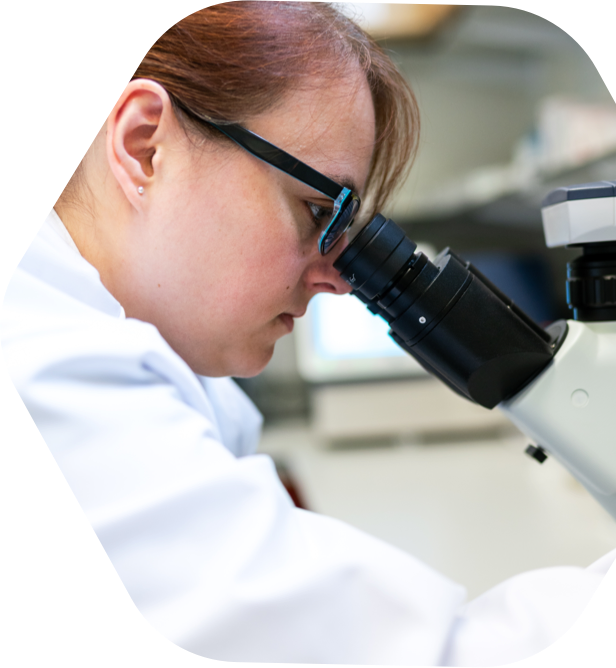
About
Markets
Through this project, the scope of each of the targeted enzymes will be broadened from a support player in the biofuel and food sectors to a star player in the biomaterials sector. This then leads to direct application in multiple consumer products such as the 6 being formulated and tested in the project.
In EnXylaScope these 6 products have been strategically selected in order to demonstrate the versatility of modified xylans in a range of important consumer product sectors: personal care, cosmetics, nutraceuticals.


Personal care and cosmetics
Enzymatically modified xylan i.e. debranched and grafted with desired functional groups can be used as rheology modifiers, emulsifiers, thickening agents, stabilisers and active molecule delivery systems to skin or hair in personal care and cosmetic applications. They can also be used as softeners to reduce the harshness in the scrub. The objective of the project is to produce enzymatically modified xylan that can replace liquid plastics used in the daily care products. Xylans grafted with phenolic groups are cross linked during the reaction with phenolic dimer formation and creates a network (Farhat et al 2016). Cross-linked xylan acts as a hydrogel and can be used for rheology modification and thickening agents and delivery agents for active molecules. Xylans grafted with fatty acids acquire hydrophobicity and can act as micellar structures and provide emulsifying and mild surfactant properties and hence can be used in emollients and bodywash formulations. Hydrophobic cross-linked xylans act as thickeners in solid cosmetics like lipsticks. All the above-mentioned modifications will be tested using grafting enzymes (laccases, and lipases,).
Nutraceuticals
Xylan based nutraceuticals such as xylo-oligosaccharides (XOs) have already gained attention as prebiotics for humans and animals and xyaln side chain acting enzymes, especially arabinofuranosidase is used in feed industry as digestive agent (Ribeiro et al 2016). Xylans mentioned will be subjected to gut modulatory potential as well anti-inflammatory response. In the gut model, the products to be tested will be incubated with faeces from humans, pigs, chickens etc and after incubation check for changes in gut microbiota and short chain fatty acids (SCFA). Xylans will be mixed with and without partner’s feed and food products as well as competitor products in the market. This will give a significant amount of information on effect of type and amount of side chains on xyalns, DP of xylans on gut microbiota as prebiotics and anti-inflammatory agents in the presence of stimulants. Xylans grafted with phenols and their oligos might have higher anti-inflammatory potential compared to WS-xylan and WIS-xylan due to the anti-oxidant potential of phenolic groups. This study is beyond state-of-the art as it tests native xylans and functionalised xylans derived from them for nutraceutical applications. This will be the first ever report on enzymatically functionalised xylans tested for nutraceutical properties. It will open new avenues in the nutraceutical sector, as product quality can be controlled and customised for the targeted group of people with selective requirements for functional foods and nutraceuticals.


Enhancing the competitiveness and sustainability of European Industry
For cosmetic and personal care products, Europe is highly reliant on synthetic polymers produced in Asia and is currently importing thousands of tonnes of these each year as raw ingredients. Additionally, several thousand more tonnes are imported in the form of formulated and packed cosmetics and personal care products. This is creating a huge drain on Europe’s economy and the environment. Europe has been at the forefront in the biobased sector and in several biotechnology sectors and it also has strong parties in enzymes (such as METGEN) which is a strong base that should be expanded to new consumer sectors.
By expanding the use of enzymes and biobased processes to cosmetics and personal care products, as well as by increasing the range of nutraceuticals that can be produced from non-food resources, EnXylaScope will significantly enhance the competitiveness and sustainability of European industry.
With such new enzyme technologies patented in Europe, and with the engagement of European cosmetics and personal care industries (e.g. SEPPIC) and European food and beverage producers (e.g. KERRY and FERMEX), Europe will turn from a net importer to a net exporter of these products.



New market opportunities
EnXylaScope focuses on 3 consumer product sectors (cosmetics, personal care and nutraceuticals) but xylan polymers have huge potential in other sectors such as packaging, paints and coatings, textiles, and biomedical (wound dressing).
Demonstration of enzymatically-modified xylan for its potential in cosmetics and personal care will provide greater insights on technical and chemical properties of these xylans and will open new markets where similar properties (rheology, water absorption capacity, emulsification capacity) are required.
Additionally, demonstrating the potential of modified xylans in nutraceuticals will open avenues such as novel targeted drug delivery systems and natural anti-inflammatory compounds.
The consortium expects that project publications such as “Enzymatically modified xylans and their versatility” will trigger new areas of research for the project’s enzymes (xylan debranching and grafting enzymes) and for xylans in general. We envisage this enabling xylan to become a platform polymer for biomaterials industry considering its enzymatic tunability.



Commercialisation state-of-the-art: and sustainability a chicken-and-egg situation
Suitable enzymes for the latter modifications are well reported and are commercially available. However, the same cannot be said for xylan debranching enzymes as most of them can act only on oligomers and not polymers and the enzymes that can act on polymers have very narrow operating ranges, thus making them unsuitable for industrial processing environments and cost-effective technologies for the production of water-insoluble xylan (WIS-xylan). Instead, these enzymes have been somewhat disparagingly referred to as “xylanase accessory enzymes”, used in cocktails that target the deconstruction of the xylan backbone for monomers production. Such an approach results in the value of xylan as a polymer being lost. To date there has been a chicken-and-egg situation with regards to the commercial development of xylan debranching enzymes and xylan as a biobased polymer. Product developers do not widely incorporate enzymatically-modified xylan into their product lines due to a lack of suitable enzymes, whilst enzyme developers do not focus on discovering and producing such enzymes as they see a lack of market demand. In the latter case, an additional hurdle preventing R&D on these enzymes is the fact that the journey from discovery to market is capital and time (5-7 years) intensive. As a result, to date the biobased sector has focused on enzymatic approaches for isolating and upgrading the other main lignocellulose polymers (cellulose and lignin), in their polymeric form, whilst xylan is still too frequently considered to be a side-stream of comparatively less value, only suitable for hydrolysis.



Recent advances from the enxylascope consortium: now is the time
There have been several recent key advances by the EnXylaScope consortium in: high-throughput screening methods (SINTEF), production systems (LUND), xylan extraction (CELIGNIS), and enzyme production and applications in grafting (METGEN). Additionally, others in the consortium have a recent strong interest in biobased alternatives for synthetic polymers in cosmetics and personal care products (SEPPIC) and in expanding their existing feed and food markets by taking advantage of growing biotechnology (KERRY and FERMEX). As a result, it is now an appropriate time to accelerate research on xylan debranching enzymes and xylan for functional polymer applications in order to pioneer the process and gain commercial advantage. Concerns over the time it can take these enzymes to be discovered, produced, and brought to market are fully addressed via the development, by the project’s research and SME partners, of several key innovations including: multi-omics tools, advanced high-throughput screening (HTPS) methods; the development of a software tool for accelerating enzyme cocktail development; and model-based optimisation of enzyme production. Most importantly the project has a workplan that involves constant feedback between take-up-partners, enzyme producers, and xylan processors, ensuring that everyone works with the common goal of developing efficient enzymes and greener consumer products that are cost- and feature-competitive and available on the market within 2 years post-project.












